| |
Did You Know?
Weight Makes Horsepower
February 24, 2011
Did You Know?
Street 6 cylinder engines have a steel counter shaft cover.
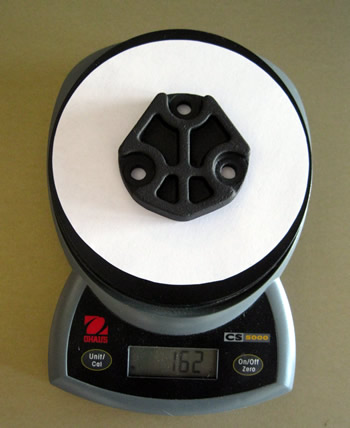
Here's the counter shaft cover for a early 911 engine. It's made of cast steel.
|
Did You Know?
Racing 6 cylinder engines have aluminum covers.
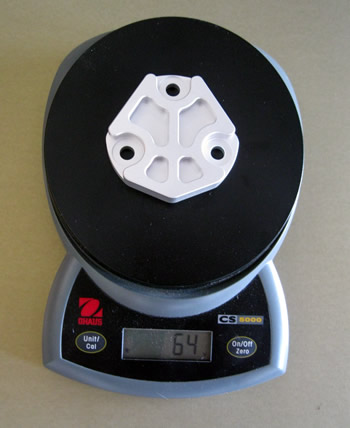
This one is made of cast aluminum and is used on all the Porsche 6 cylinder racing engines. Do you notice the weight in grams on each cover? That's a lot and weight computes to speed. A lighter car is a quicker car. Problem is, most of the time there's a weight regulation! When you hear of all the titanium racing parts on a Porsche racing prototype you're thinking, "Wow! Awesome! Titanium parts!", but let's refer back to the fact that the car normally has to weigh "X" to stay within the boundaries of what's legal and what's not. Now if the car is too heavy when it's finished then you have to go back and start making things out of aluminum and titanium to get the car to weight.
Let's not forget about the fat driver! Most often when you see all the titanium parts on a prototype you might have saved 5lbs. The weight difference between Udo Schutz and Pedro Rodriguez would be more than 50lbs. So back to figuring out which road you want to take to save some weight... If you make everything light then you have the option to put the weight where you need it. That's what Porsche did and that's what makes sense.
|
Did You Know?
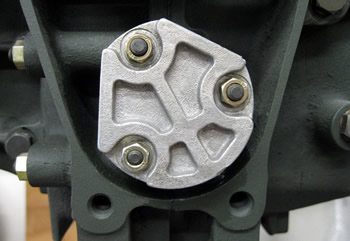
This is an aluminum counter shaft cover on a 910 hill climb engine. There are many other parts on this engine that are special to this hill climb engine. Hill climbs had leniency on weight regulations in the 60s. A drill index, a knife and an imagination got these cars to the ultimate weight, which would be unsafe in most cases, but the racing was done on timed segments not door to door. I guess they figured no one cared.
|
Did You Know?

There is a difference between the cam oiler on a street engine case and a race engine case. These 2 photos are a 2.0L racing engine.
|
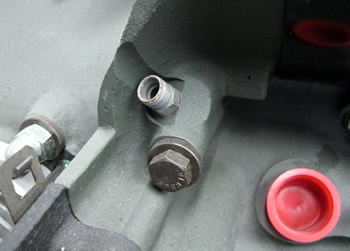
Look at both pictures and you can see that this oil feed (fitting) comes out on an angle facing cylinder #3. You can also notice that the case-through bolt goes in backwards. The reason this is done is because of the twin plug distributor. It's not quite 2 times as big, but it definitely needs more room. Even turning the bolt around gives it approx. another 15mm from the head of the acorn nut.
|
Did You Know?
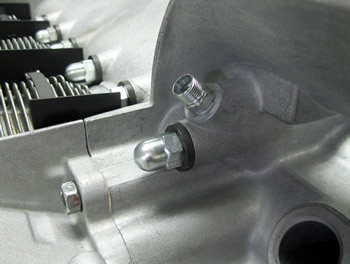
These 2 photos are a 1964 street engine. Look at how the fitting comes out parallel to the case-through bolt.
|
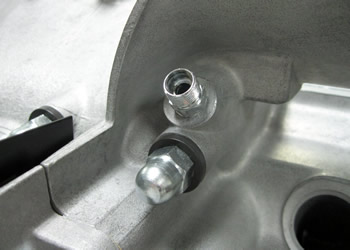
Because of it coming out straight, the oil line is in the way of the distributor, thus will not work unless a special line is devised. This can be done, but it's kinda "iffy" at best. There are lots of ways to get around it, Lord knows everybody has their own idea. The bottom line is it's easy to tell a racing case from a street case with this one item. There are more and we'll discuss those later.
|
<<Previous / Next>>
|
|
|
|

